



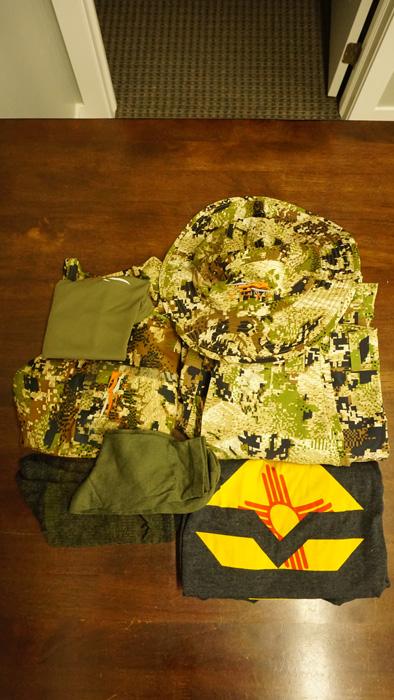

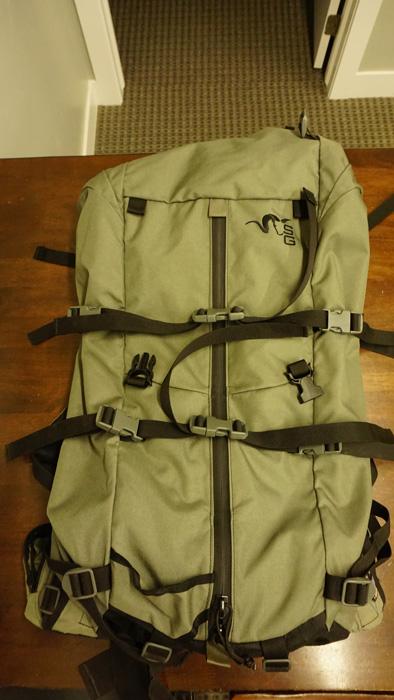
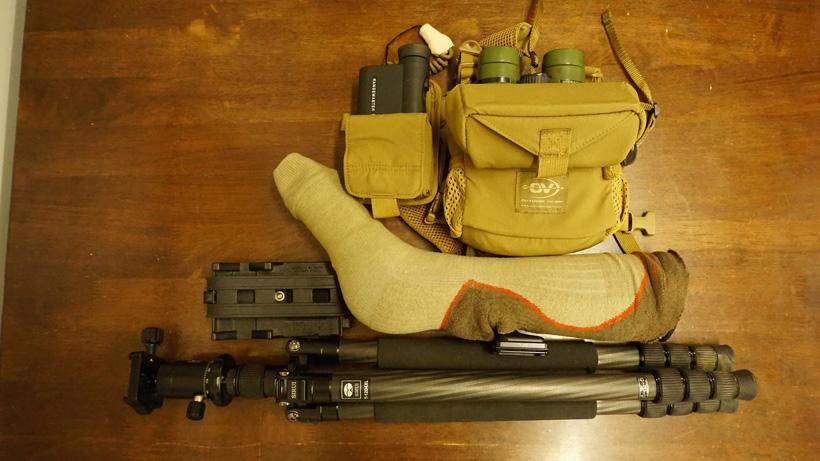
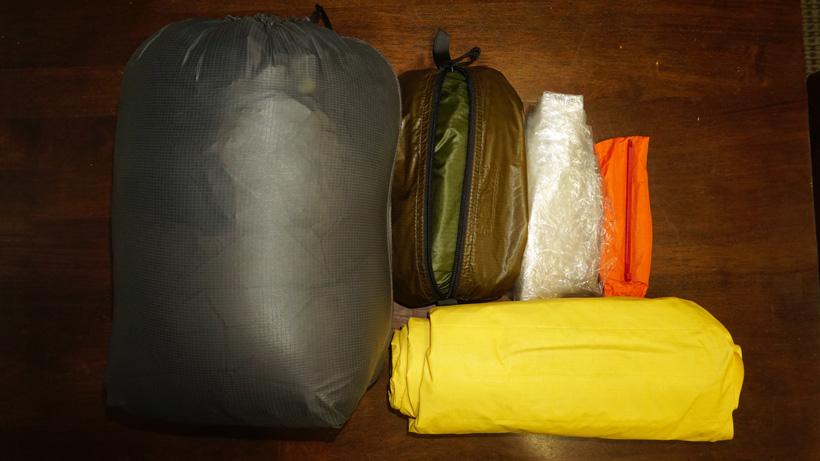
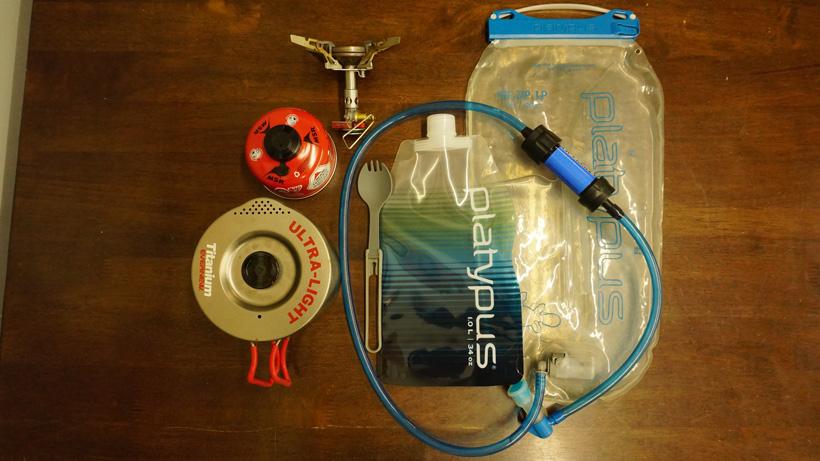

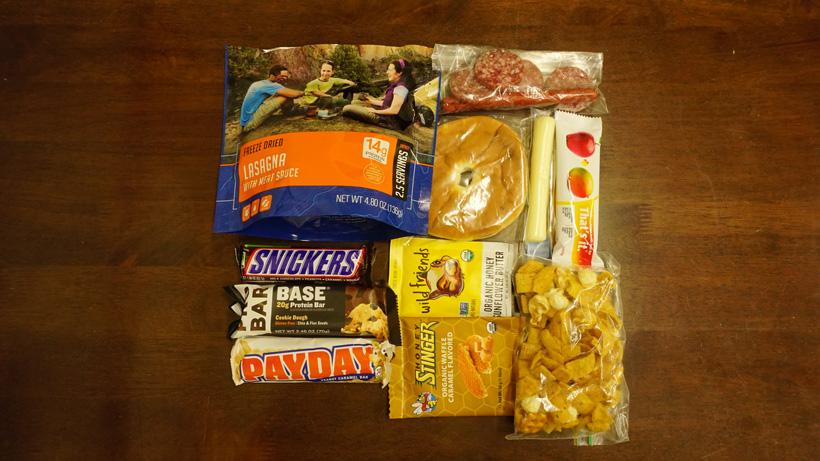
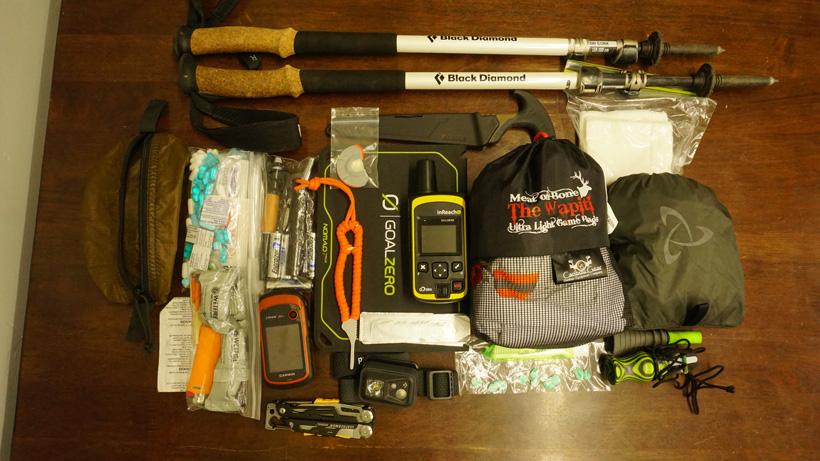


Below is my 2017 elk hunting gear list. Specifically, this is my anticipated lineup for a 10-day backpack elk hunt that I'm leaving for tomorrow. The list may change some depending on the location, length of time, and species, but, for the most part, this is it. My list seems to be ever evolving and there are number of items that I have purchased and tried this summer and during the early parts of our archery deer hunt here in Utah. Overall, it’s a mix of tried and true items and some new pieces that I am optimistic about. Gear is something I am passionate about and I’m excited to share my list, insight, and answer any questions that you may have.
TRAIL KREITZER'S BACKCOUNTRY BIVY ELK HUNT GEAR LIST
I do not pack a lot of extra clothing. In fact, I would rather—and regularly do—“rinse” my clothing items in the field instead of pack more. Specifically, I’m talking about items like socks, underwear, and base layers...I do not take any extra. I will wear one pair of socks, underwear and a base-layer on a 10 day hunt. Gross, I know, but it’s a trade off that I’m OK with. Typically, I sleep in those items and wake up dry due to body heat. On a slow day when I’ve got good sunlight and a water source I will wash and rinse those items and hang them to out to dry. I also will flip my sleep system inside out to get some air.
The extra clothes I do take are aimed at keeping me warm and dry. I pack a beanie for sleeping and keeping my ears and head warm early in the morning. I also pack a lighter set of gloves to keep my hands warm as the temperatures begin to dip. I pack rain gear to keep me dry, a mid-weight hooded layer and a down jacket for warmth. The Black Diamond Cold Forge Hoody may be overkill—it’s a bit heavy and there are definitely lighter options—but I know that it’s warm. I have been know to sit waiting to ambush a bull on a wallow from dark to dark and sitting for long periods at elevations over 10,000’ require warm clothing so I’ll live with the extra weight.
I’m really excited to be using the Stone Glacier X-Curve Frame and Packs this year. The weight, rigidity, and quality is excellent. A pack of this caliber that weighs in at under 6 lbs is just icing on the cake. For 10 full days of hunting, I decided to bump my usual pack (Sky 5900) up to the 7400 for a bit of added space. I have also added a few Stone Glacier Swing-Out Pockets, the Hydro Sleeve to hold my water bladder and the Camp Pocket for organization, which I will touch on later.
I also always have a pack rain cover. It keeps gear dry during a storm and I place it over my pack and gear at night when I’m bivouacked out to keep things dry and contained.
If I am hunting more open terrain or any hunt outside of the rut, like Utah’s archery season or Arizona’s late archery, I pack a tripod, bino tripod adapter, and a spotting scope. If the vegetation is thick or if the dates align with the rut like they did for me last year in New Mexico I may ditch those items to cut the weight and be more mobile. It’s a judgement call. I would suggest doing some research up front on the terrain, vegetation, and potential of the tag. In the end, I typically pack those if I’m unsure. I’d rather have them and pack them around then need them badly and not have them.
A new item I’m trying out this year is the Enlightened Equipment Enigma Down Quilt. The quilt has a closed footbox and an open top portion with straps that you can connect under your sleeping pad, but no zipper and no hood. Ditching those drops weight, putting the 10° quilt at 1 lb 5 oz although I wouldn’t want to see a true 10° night in it. Comfortably, I’d suggest that the mid 20° to 30° range is a better reflection of what it's capable of, which is sufficient for most hunts. I could add my extra layers if I needed them.
I am a huge fan and proponent of bivouac hunting for elk and would attribute a lot of the success I’ve had to this style of hunting. Elk are big animals that can cover a tremendous amount of country. My preferred method is to stay with a bull or chase bugling bulls, starting with a loaded pack as close as I can every morning and keeping myself as close as I can every night. Setting up a tent takes time and some space; whereas, a sleeping pad, bivy and sleeping bag can be thrown out just about anywhere in a matter of minutes—even in an elk or deer bed on the side of a steep slope. Most nights, I simply use my pad, bivy and sleeping bag and everything else stays in the pack. If heavy rain is eminent I do pack and pitch the Rab SilTarp 2 with trekking poles for added coverage and protection. I love the mobility a bivy offers, but spending multiple days socked in with bad weather in one is no fun at all. Having both is optimal and the tarp will sleep/cover two easily. I have also used a tarp as a ground cloth to lay meat and quarters on as I break down a bull.
Over the years, I have used bladders, switched to bottles, and am now back to bladders. I like the convenience of a bladder and find I drink more, feel better and stay hydrated if I use one. The only downfall is that if one springs a leak in your pack it will ruin your day and could put you in a bad spot if it soaks your gear. I have had good luck with the Platypus bladder and I try to inspect it every time I fill it up. In addition to the 3L bladder, I also carry a 1L Platypus Softbottle that I fill up every day and use for my Mountain House that night. They are easy to fill up and pour.
In total, with 4L of water, I'm sitting at 8 lb. 13 oz.
I get asked about filtering/purification quite a bit. Like a lot of my system, I often error on the side of convenience. I like the Sawyer Mini Filter and I install it within my drink line, which allows me to stop at a water source fill up the bladder, zip it shut and I am on my way. Weighing in at only 2 oz, I hardly notice it and it filters my water as I drink. I also carry purification tabs and drop them in the bladder as I fill it up. I’ve had good luck with this system when running water is relatively available. If I hunt more arid environments where water is scarce or it may be sitting and murky, I may carry a more robust filter like the MSR MiniWorks or a gravity filter and additional storage bladders.
Like my hydration system, I’ve flip-flopped a bit on my stove combo over the years. Currently, I am using a Soto WindMaster and Titanium pot. The benefits are that you save quite a bit of weight over the JetBoil or MSR Reactor types and I like the performance and control this stove offers me. This system is not as stable though and nothing makes you more upset than tipping over boiling water or a meal when those are limited commodities. Overall, I’ll take the weight savings on a long trip and I’ll be more careful.
Like a lot of you, I organize my food by day in one gallon zip lock bags. This keeps things organized and I don't have to think about what my food situation is for the day. I'm not a big breakfast eater, I typically pack a meal bar and dive into it either right out of bed or mid-morning after things have slowed down a bit. I like the Pro Bar Base bars, which have 20 g of protein and fill me up fairly well.
For lunch, I pack a flat plain bagel, four thick cut pieces of dry salami, string cheese, a nut butter packet, a dried fruit bar and a mix of caramel popcorn and Frito's, which is a personal favorite. Some days I mix it up with a Tuna packet and Ritz crackers instead of salami and bagel. I also pack a few items for snacks throughout the day, including a Snickers or Payday bar and a Honey Stinger Wafer.
I like a hot meal for dinner. I sleep better, and if it's cold like it's likely to be on this hunt, having a hot meal before bed helps me sleep warmer. I pack one Mountain House meal per day. In total, I pack approximately 1.5 lb of food per day. Total calorie intake per day is approximately 2,382.
I could touch on many items, but, in looking over my list, I’ll pull out a few of the more notable. My Garmin InReach goes with me everywhere. I use it to touch base with my wife and I love that I get updates back on how my family is doing. I also use it to make arrangements for my packer to haul an elk out once I’ve harvested. The battery life on it is very good, but I do pack a small solar panel to keep it charged. It gives me peace of mind and I like that I can freely message my wife and friends without worrying too much about battery life.
I pack a small saw; the Gerber Myth Fixed Saw is only 3.9 oz and it’s useful to cut bone or branches for a makeshift blind, shooting lane, or tarp support. I also pack a Leatherman multi-tool—mostly for the pliers and fixed knife blade. Pliers can be used for pulling tent stakes, slivers, or even used to hold a suture needle if you had to stitch a bad cut up.
I would suggest you get a medical kit together, including painkillers, bandages, tapes, and a small suture kit. Lighters, storm proof matches, and tinder are also critical. Backpack hunting is physically demanding and bad things can and do happen. It’s best to be prepared. It’s also nice to have a few ibuprofen and sleep aids to help take the edge of the aches and pains and help you get to sleep.
Most of my loose gear, including my medical kit, knife, extra blades, leatherman, InReach, Aquatabs, spork, headlamp/flashlight, lighter/matches, fire-starters, batteries, tag, map, hygiene items, and any extra archery accessories go into a Stone Glacier Camp Pocket which keeps me organized.
I have a pretty straight forward setup, perhaps the only exceptions from the more typical are the stabilizers and the release I use. Offset back-bar stabilizers have gotten more popular among bowhunters in recent years and, if you haven’t tried one, I would encourage you to do so. The added stability is worth it, in my opinion, and I’ll continue to use them. My bow setup is quite heavy and, to some, it may seem over the top for a backpack hunt, but for me it’s a worthwhile trade. From my perspective, the life of the animal and the effort required to get me in range are great enough that I will do about anything to increase my odds of a quick harvest.
I also hunt with a hinge or back tension style release. A number of years ago I developed a good case of target panic. I switched to a hinge release and focused on trying to relearn the shot process and execution. Since then, I have sold all of my trigger releases and I only shoot a hinge. Does it have it’s disadvantages for hunting? I would suggest that it does, but for me it also has advantages. I’ll touch on the reason I use one. A hinge release requires me to execute the shot naturally as I have done thousands of times at the range. I’ve had several times when I have drawn on a buck or bull and seeing my pin come to rest on it’s side, my mind screaming for me to dump the string immediately...but I haven’t. My shot process has held together and in time the pin settled and subconsciously the shot broke. Those have been my best shots and I can attribute that to committing to the process and learning to shoot a hinge release.
Trail Kreitzer backpack elk hunting weight
In conclusion, my gear list has evolved over the years. I’ve made some good and some bad decisions. If I had some advice on where to improve or spend your money, it would be in a few key areas: optics, sleeping bag/system, and pack. You can’t kill what you can't see and a quality pair of binoculars and a rangefinder are key. You can’t backpack hunt if you don’t sleep well or if you are cold; get a good pad and a quality sleeping bag. A high quality pack will carry more comfortably, typically be lighter, and won’t fall apart. Finally, if you haven’t tried a true backpack style hunt, you owe it to yourself to get the gear together and go for it. There is nothing like living off of your back for days at a time and the sense of accomplishment that comes with harvesting an animal that way. There’s nothing like it!
Pro Bar Base Bar: 290 calories
Snickers Bar: 250 calories
Nut Butter Packet: 190 calories
Sting Cheese: 80 calories
Plain Flat Bagel: 110 calories
Dry Salami: 237 calories
Fritos 2 Servings: 300
Caramel Popcorn 1/2 Cup: 75 calories
That's It Fruit Bar: 100 calories
Honey Stinger Wafer: 150 calories
Mountain House Meal: 600 calories